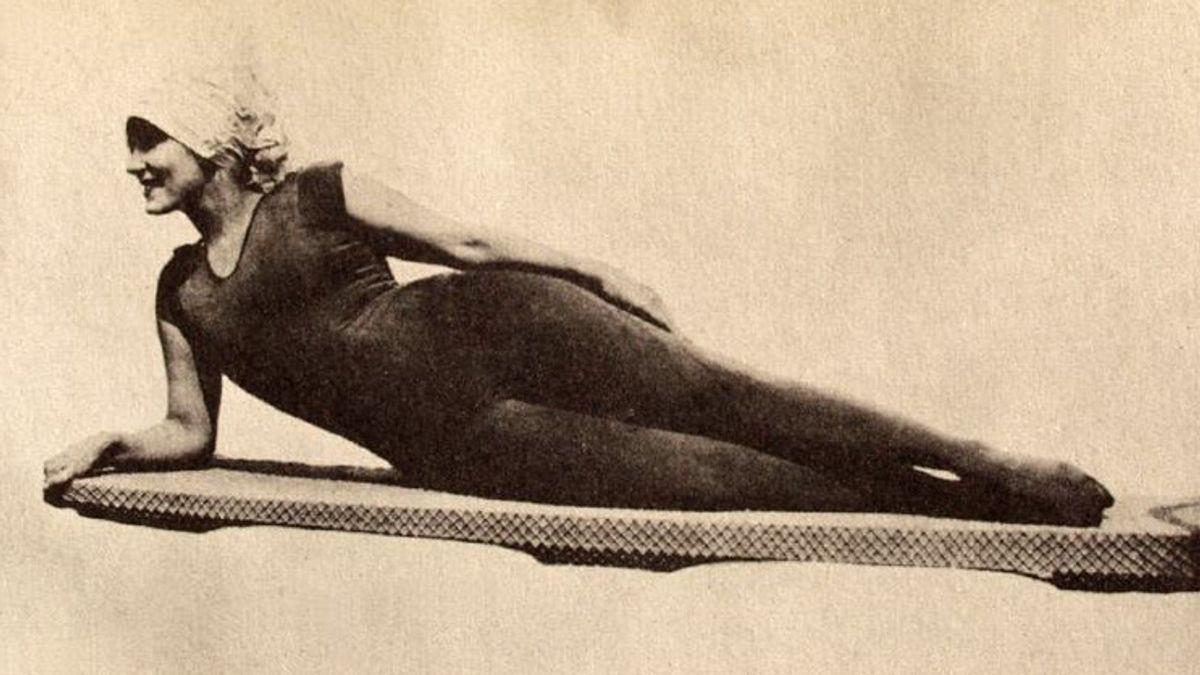JAKARTA - On July 5, 1946, French designer Louis Reard launched a two-piece swimsuit modeled on a woman who was photographed at the Piscine Molitor, a popular swimming pool in Paris. A famous model in Paris named Micheline Bernardini, was considered brave because she wanted to wear a swimwear that was considered controversial.
The new fashion of the swimsuit is called the 'bikini' which was inspired by the United States (US) atomic test taking news from the Bikini Atoll in the Pacific Ocean.
Launching History, Sunday 5 April, European women first began wearing two-piece swimwear consisting of a top and shorts in the 1930s. However, only a small part of the abdomen is open and the navel is closed with a subordinate.
In the US, the modest two-piece swimsuit emerged during World War II, when there was rationing of cloth and a reduction in other excess material. Meanwhile, in Europe, fortified coastlines and Allied invasions restricted coastal life during the war and development of swimwear came to a halt.
In 1946, Western Europeans happily welcomed a war-free summer for the first time in many years. French designers began to create fashions to suit the moods of liberated people.
However, when the bikini was launched in 1946, it did not mean that it was launched for the first time. In the fourth century, for example, Roman gymnasts wore tops called bandeau, bikini trousers, and perfectly looking anklets.
Two French designers, Jacques Heim and Louis Réard, developed a bikini prototype. Heim calls his swimsuit work "the Atom" and advertises it as "the smallest swimsuit in the world." Réard's swimsuit, which is basically a bra-like top and two inverted fabric triangles connected by straps, is actually much smaller. Made of 30-inch fabric, Réard promotes its creation as a swimsuit 'smaller than the world's smallest swimwear.' Réard then called his creation a bikini.
In planning his new swimwear debut, Réard had a hard time finding a professional model who would be pleased to wear the two-piece outfit. Then he met a woman named Micheline Bernardini, an exotic dancer at the Casino de Paris, who had no qualms about appearing almost naked in public.
Knowing that her swimsuit model would make headlines and profitable, she featured the bikini-clad model in the newspapers. The bikini then became popular. Bernardini also became popular with men and received about 50,000 fan letters.
Before long, brave young women in bikinis caused a sensation along the Mediterranean coast. Spain and Italy passed measures banning bikinis on public beaches but then gave up over time when the two-piece swimsuit grew to become a mainstay of European beaches in the 1950s.
Réard's business took off and with each ad for her bikini, she kept the mystique of a bikini alive. She claims that a two-piece suit is not a real bikini "unless it can be pulled through the ring."
In the US, a ban on the use of bikinis was successfully resisted in the early 1960s, when there was a liberation of bringing swimsuits en masse to US beaches. The moment was immortalized by pop singer Brian Hyland, who sang 'Itsy Bitsy Teenie Weenie Yellow Polka-Dot Bikini' in 1960.
The use of bikinis also coincided with the surfing culture in California which was celebrated by rock groups such as the Beach Boys. Since then, the popularity of bikinis has continued to grow.
However, not all countries can be places for people to wear bikinis. For reasons of culture and beliefs, bikinis are reluctant to be used. People prefer one-piece or one-piece swimsuit that is more closed.
The English, Chinese, Japanese, Arabic, and French versions are automatically generated by the AI. So there may still be inaccuracies in translating, please always see Indonesian as our main language. (system supported by DigitalSiber.id)













